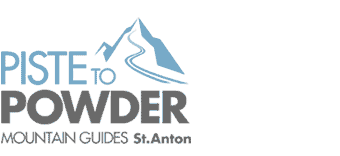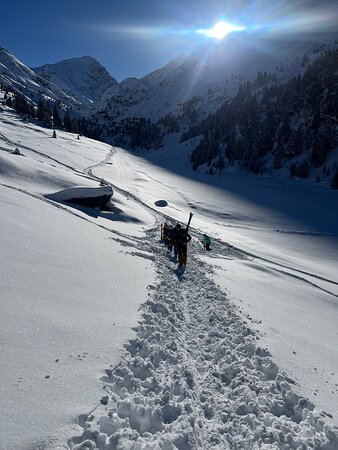Which avalanche airbag? Is an avalanche airbag needed for off piste skiing and freeriding?
Over the last 10 years the popularity of airbags has spread rapidly amongst Off-Piste skiers and boarders and you will see many people now wearing these in St Anton. Their main safety aspect is that when deployed, they have been shown to keep you in the top level of the avalanche, preventing you from being buried. And while factors such as terrain (rocks) will have an impact, studies prove airbags do increase your chances of survival, a good enough reason to look at renting or even purchasing one.
Which ABS bag do I need?
There are many ABS bags on the market now and it really comes down to a personal choice and cost. Weight is also a very important consideration because if its heavy you are less likely to use it, especially when buying for teenagers. Look out also for the type of ski or snowboard carry system thats comes with the bag and for any special compartments for your safety items (shovel, probe, transceiver)
First consideration is the shape of safety bag:
How big does your ski bag have to be? If you need it only for off piste skiing close to the ski area a smaller one (e.g. 20 liters) will do, if you’d like to go skitouring also, get a bigger one (e.g. 30 liters). It also needs to fit to the size of your back – some airbags are designed specifically for women so they fit more comfortably to our backs.
Weight considerations:
Each year bags become lighter (and cheaper). Ortovox now have one of the lightest bags in the market – see Ortovox Avabag ascent total weight of system and canister with the bag is 2.17kg. ABS uses a vario system so you can change the size of your bag. Given the choice, opt for a carbon cartridge which are lighter. Some also have detachable ABS systems to allow you to use the back-back also as normal bag, e.g. for summer use.
What kind of System is best?
The ABS system which has now been around for more than 30 years, uses a removable activation handle which when pulled inflates dual bags which come out either side like a pair of angel wings. The balloons are filled independently for increased safety – if one bursts you still have the second. Many brands all use the ABS system in their packs, so if you like a bag just check the system used before you decide. Others such as snowpulse, will wrap around you, ostensibly protecting your head and neck against trauma. The downside is once deployed you could lose some vision and range of motion.
Another thing to bear in mind is the type of detonator used. ABS uses explosives to trigger the airbag other systems use batteries or detachable cylinders which make flying less of an issue. However if you notify airlines in advance and remove the cannister you should not have a problem with the ABS.
Interesting is also the system of Black Diamond, called Jet Force which will continue to self inflate even after puncturing, Arcteryx also have a system powered by batteries which mean it can be used more than once.The downside is the weight at the moment.
If you’re unsure which system is best for you, talk to the staff at Jennewein who can advise you. See also the Telegraph article 2018 on ABS bags to give you an idea of different types for different purpose available.
Don’t forget other important avalanche emergency equipment
When buying an ABS don’t forget about your basic equipment which is a digital 3 antenna transceiver, a shovel and a probe. Also here, keep training! In case of an emergency you have to know how to use it. Our guiding includes free safety equipment and we make sure that you understand how to use it and we’ll train you properly! Don’t forget your first aid kit and some other helpful stuff.
Training & maintenance
Training is essential! Key to safety is actually triggering the bag in time – as it can take 1-2 seconds to inflate. This should be done at the first sign of an avalanche, not when it hits you, when it is most likely too late. Alarmingly the non-trigger rate in studies of mortalities show it is higher than 20%.
Make sure you test it each season – ideally at the start. You can do this in any ski shop (tell the staff first!) and then purchase a replacement cannister. The handle can be removed – and this should be done after each use and prior to apres!. You should also periodically lubricate the trigger installation mechanism – any lube will do but if in doubt ask in a ski shop.
Trust the pro’s
Do you know the terrain you’re skiing? Have you checked weather and avalanche bulletin information? What are the snow conditions to be like? Those are only a few questions out of many which have to be asked before entering the off piste to have a fun but also safe day out.
The Piste to Powder team are all qualified UIAGM mountain guides which is the highest education in terms of snow and mountain knowledge worldwide! Our aim is to take you to the best snow and terrain on any given day and help you to push your limits and develop your backcountry skills while making sure that you enjoy maximum safety at all times. We’re choosing the terrain according to the group and know the conditions! Our guides work closely together all day long and our daily morning meetings guarantee we find you the best powder lines without compromising safety.


















